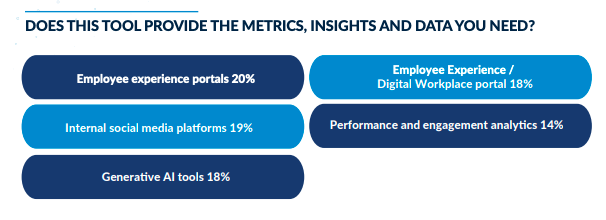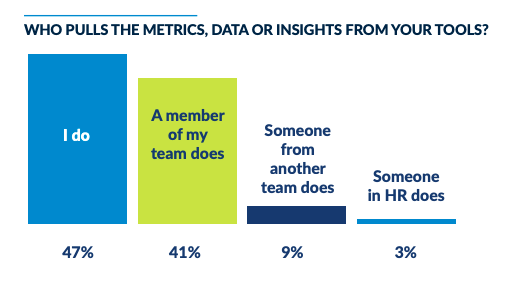Ragan’s CommTech Report Reveals How Comms Pulls Data And Insights
Ragan’s Communications Leadership Council, a membership community comprising senior communicators who are instrumental in shaping exemplary work cultures and brands, recently conducted an exclusive study on the utilization of communication technology within the field. This comprehensive study delves into various aspects, including budget allocation, securing support for the adoption of new tools, and identifying the key components that may be absent from communicators' technology arsenals. Ragan has curated a wealth of insights from this research, aimed at providing a deeper understanding of the essential tools required to excel in the contemporary communications landscape.
According to the recent Ragan 2023 CommTech Report, available in full exclusively for Communications Leadership Council members, internal communicators face a number of obstacles and challenges ranging from how metrics are pulled and what tools they have at their disposal.
Having a plan to overcome every roadblock along the way — whether it’s a lack of enthusiasm or confusion around the larger strategy — will better equip communicators to prepare for the future. With that in mind, let’s take a closer look.
Sifting through internal comms data
Data without context is simply a group of abstract numbers. But with a backstory behind it, data collection can provide invaluable, qualitative insights into how your employees think and their attitudes.
Internal respondents said that metrics with origins in generative AI platforms (18%), internal social media platforms (19%), and employee experience portals (20%) were least able to provide useful and needed comms data. On the other side of the coin, survey respondents claimed that employee surveys and the metrics from newsletter software were the easiest to understand.
This is indicative of the overarching idea that more isn’t always better.
A key to better understanding could lie in training the right kinds of tools and prioritizing the ones that lend themselves to the highest level of understanding. For instance, generative AI has lots of potential going forward, but it’s so new and the dearth of information it’s able to provide leaves the door open to misinterpretation and inaccurate narratives.
However, using a classic tried-and-true employee survey allows comms pros to hear directly from the employees themselves, so seeing it as a preferred data method isn’t too surprising.As more tools come to the forefront, proper training on them will help add another arrow in the comms quiver.
Who’s pulling the data?
When you’re close to the numbers, it’s easier to glean narratives from them. According to the survey, either comms leaders or people from their teams are the ones rolling up their sleeves and getting into the metrics. Among internal respondents, 47% pulled the metrics themselves, while 41% reported that a direct team member was responsible for getting into the data.
While it might seem a little daunting at times, getting into the weeds with the data can have some benefits — it allows emerging comms leaders to uncover stories borne out by data that weren’t always apparent, and it can lead to a deeper understanding of existing issues and trends. Most importantly, it can build business fluency that helps communicators climb ever higher up the ladder.




